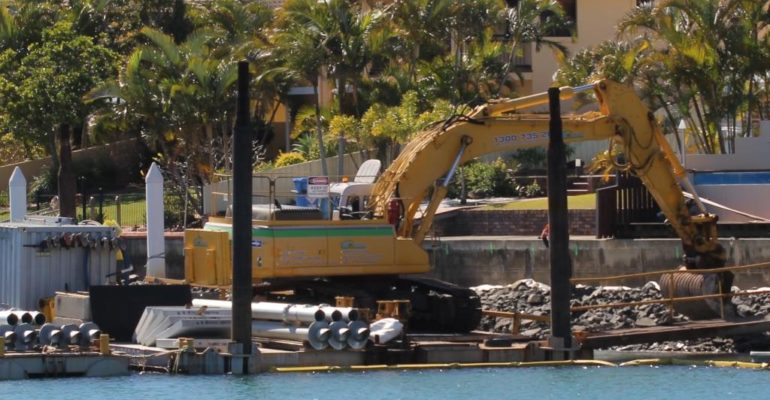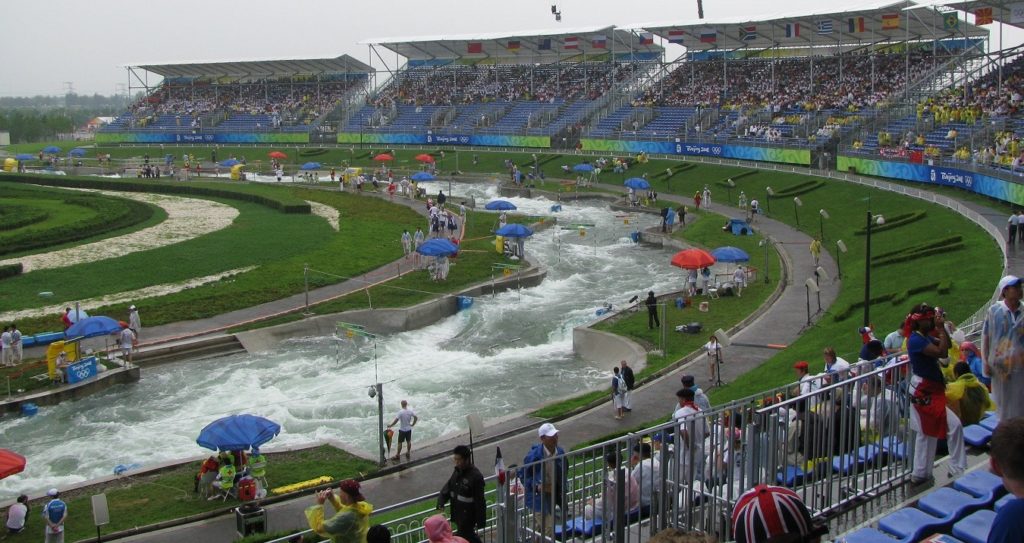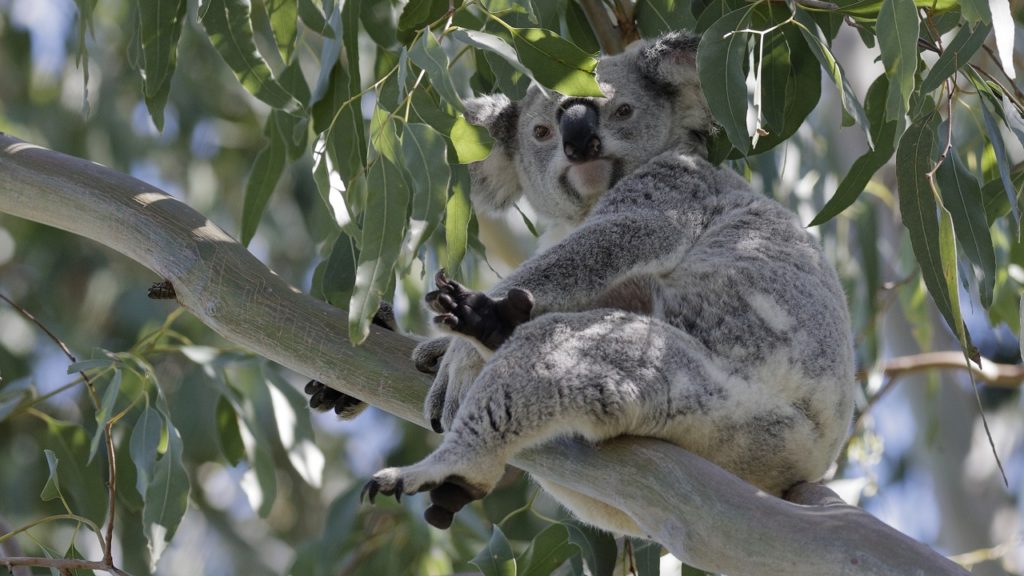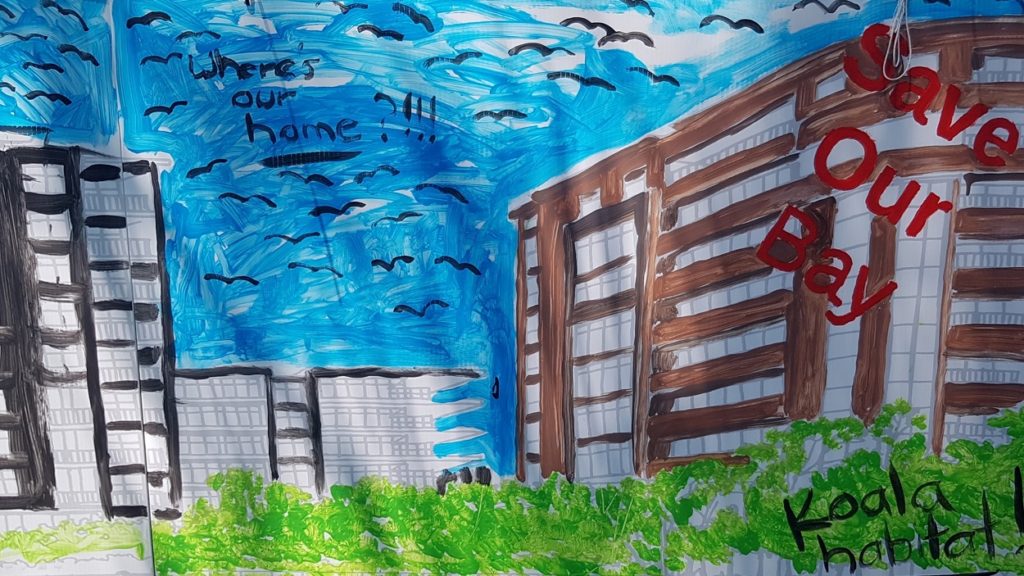
Redland City Council recently lost a class action about its canal maintenance charges
Redland City Council’s decision making, Australia’s failure to protect koalas and other wildlife, and the impact of the proposed Walker Group Toondah Harbour development on local businesses and residents are discussed in letters to Redlands2030.
Redlands2030 regularly publishes letters on various issues of concern to Redlanders.
Have your say by writing to theeditor@redlands2030.net
Legacies or liabilities left by Redland City Council

One wonders what financial legacy Redland City Council might leave for ratepayers, from Toondah Harbour, Weinam Creek and the proposed Birkdale White Rafting project (to name but a few).
It would be worth exploring and draw connections between current and future liabilities, given the recent decision regarding the class action by owners of canal front properties.
It is all about the elephant in the room.
The past experience is probably much less volatile given the unknowns arising from climate change and the potential that development in some places will be uninsurable.
Does Council have the experience or the competence to give the community assurances about these matters. It is a worry! And their track record isn’t good.
When the current projects are causing problems, a new team of councillors may be in power.
So when the proverbial hits the fan, the new mob will be able to blame their predecessors.
S.H.
Capalaba
An extinction crisis in Australia

It is time to end extinction in Australia!
Right now, we are facing an extinction crisis in Australia.
Koalas are being pushed out of their natural habitat and are moving around into suburban areas more and more and with little or no protection from car strikes or dog attacks. More really needs to be done!
Centuries of the destruction of habitat combined with escalating impacts of climate change, bushfires and deforestation are pushing endangered wildlife to the brink. Australia already has the worst track record for mammal extinction in the world.
Since colonisation, more than 30 mammal species have gone extinct in Australia. That’s the same number of mammal species that were lost in the rest of the world combined.
While the US and the UK are stepping up as global leaders on climate change and environmental protection, Scott Morrison continues to lag behind. It’s time for the Morrison Government to step up and commit to zero extinction.
Unless we act now, we will continue to lose precious wildlife. Your own environment department warns that more than 1,700 species and ecological communities are known to be threatened and at risk of extinction.
In order to stop the extinction crisis in Australia, we need to:
🐨 Adopt a target of zero extinction of species
🐨 Sign on to the Leaders’ Pledge for Nature
🐨 Commit to stronger environmental laws with an independent watchdog
🐨 Stop clearing koala and critically endangered species habitats.
Extinction means gone forever but it’s not too late to protect some of our most precious species and commit to a zero extinction target. Please step up and commit to #ZeroExtinction
Paula
Italy
Toondah represents the big end of town

I work in the Cleveland CBD area and I have become aware of the impact of the proposed Walker Group Toondah Harbour development on local businesses and residents.
Our customers and other local businesses are alarmed by the scale of the development and the lack of consultation with the community. Most concerning is the impact of increased cars and congestion by the influx of over 3,000 high-density apartments.
Many of the businesses in Cleveland are also concerned that the development of a new retail/shopping complex as part of the development will compete with the CBD businesses for foot traffic and lead to the decline of the traditional shopping precinct.
The Cleveland CBD has for a long time struggled to attract the appropriate investment to revitalise its CBD infrastructure which would both preserve and enhance the character of the neighbourhood, inclusive of the whole community.
The proposed Toondah Harbour development represents the big end of town trying to get their way, in the interest of profits, without consulting with the Cleveland and broader Redlands community.
T.G.
(Cleveland CBD employee)
More Letters about Toondah Harbour and other issues
White water centre, disappearing koalas and Toondah questions
Koala habitat tree clearing, building on mudflats and Toondah secrecy
Environmental destruction has to stop
Redlands2030 – 2 October 2021
Please note: Offensive or off-topic comments will be deleted. If offended by any published comment please email thereporter@redlands2030.net
One Comment
The Proposal to develop Toondah Wetlands
2021
The current Toondah Development Proposal reportedly disregards international environmental agreements in respect to natural conservation of limited areas of land already identified as strategically important for the survival of animals and marine life but also local birds and plants. Trade offs are not viable, given the importance of the area to existing local marine and animal life.
The area is currently home to marine seagrass and mangroves that support local marine life and is also noted for its native coral. Any tall structures will adversely affect the ability of the bay to the east to naturally function, due to restricting the amount of available sunlight. The proposed tall buildings will dramatically increase the ambient heat in the area as these multiple story buildings are a known heat sink.
There appears to be some reports of variance as to the views of local First Nations people and there does not appear to be any specific attempt to explain how this proposal may be truly regarded.
The amount of dredging that will be required to allow an enlarged marina to continually operate will adversely affect the health of the Bay. The Raby Bay canals provide some excellent examples of why this type of development should not go ahead. Apart from the question of where the excavated and dredged material is to be disposed of, there is the question on known acid soils that are chemically active and known to actively destroy retaining walls.
Local residents who have paid premium prices to relocate to this area and high rates to live here, have also apparently not been considered. There have been recent but questionable surveys circulated with very ambiguous questions that provide no real reflection by local resident sentiment. Low level housing will be adversely affected and the whole nature of the area will be downgraded.
The ability to have local nature walks and enhance life styles and old world charm will be drastically removed.
There is reportedly no plan to initially fund the Stradbroke Island Ferry Terminal upgrade until after the Toondah proposal has been agreed to and semi completed. Yet the original concept was reportedly to upgrade the existing Ferry Terminal. Why has the original proposal morphed into this huge ‘so called’ development? Presumably, only to provide significant profits to the developers and spin offs to their supporters? There appears to be nothing in this proposal to benefit local residents except significant and continual future disruptions and extra costs.
It has been claimed that this development will provide local employment opportunities. It is reported however that the proposed developer is likely to use his own work force and even that will be transitory, once the construction phase is completed.
There is growing concern from the current Cleveland businesses who now realise that their businesses will be severely and adversely affected by this proposal.
Please find listed below some of the issues that need to be resolved and costed but not paid for by the current residents of the city.
Supporting infrastructure– Roads
1) Local roads into and out of Cleveland already jammed night and day, any additional traffic will increase the already unacceptable congestion. There appears to be no part of the Toondah proposal that funds the clearly required dramatically upgraded access roads. Local Residents will be both required to endure heavy machinery and excavation equipment and dramatically increased traffic in their currently quiet neighbourhood and suffer the expense of funding upgraded roads and facilities through their rates and taxes.
2) Emergency Service vehicles such as ambulance fire and police may be impeded on the already congested roads and so increase a danger to public safety.
3) Current parking in Cleveland is difficult to access and venues such as the Train Station parking are already filled prior to 7.00am. Additional congestion and inability to reach Cleveland or other stations further up the line will be intensified.
4) Increased pressure on public transport to and from Brisbane will be further exacerbated due to the increased lack of parking.
5) Given the Cleveland rail line is a single line, the ability to increase train frequency is limited The line needs to be made into a double up and down line structure.
6) Bus service are also infrequent and add to congestion on the roads so the use of public transport is limited.
7) The road way to Toondah passes through known Koala habitat and Koalas have been seen on the roads that will give access to Toondah.
8) Increased traffic congestion will increase the potential for accidents.
9) The proposed increase in traffic will impact on schools in Cleveland and represent additional danger to children on bikes and road crossings.
Supporting Infrastructure– Electrical Power
1) The demand for electrical power will be significant in an area already reportedly under pressure. The proposed Toondah development is at the end of the distribution power line and will demand significant increase in the power supply to Cleveland in terms of distribution and transformers A significant mains power line could well be needed.
2) Unless power lines are placed underground storm damage may occur.
3) Any additional overhead lines adjacent to an international bird sanctuary represent a danger to migratory and domestic birds.
Supporting Infrastructure—Water
1) Redlands Council is already warning of water shortage and warning against unnecessary use. An estimated extra 10,000 residents are proposed to be accommodated will increase consumption?
2) If the additional local water consumption had been calculated, what provision has been made for reserves of drinking water?
3) Additional water mains required can be expected to cause significant disruption to road and pedestrian traffic.
4) Cost of additional water supply will be an additional burden on existing residents.
5) In times of drought the city is already short of water to the point serious limitations on water use are applied.
6) Since no additional sources of water have been identified, the use of water for gardens and car washing may well be banned for an indefinite time for the whole city. Has this been advertised?
Supporting Infrastructure—Sewage and Grey Water Disposal.
1. Given the proposed development is close to sea level, extensive provision for the treatment of sewage from at least 10,000 to 15,000 residents and visitors to the location will be needed. This will require large pumping system to remove both sewage and grey water to a treatment plant.
2. Such pumps will demand increased electricity usage.
3. A storage capacity for sewage will be essential to prevent discharge into the sea of raw sewage when there are power breakdowns and interruptions.
4. Storm water runoff, which can be significant, will need to be provided and which does not discharge rubbish into the sea.
5. There has been effluent discharges along Hilliard’s Creek already and this is an indication of what will happen should this proposed development proceed.
Supporting Infrastructure—Communication
1. Increased demands will be applied to an already inadequate Wireless communication system.
2. Poor mobile reception exists in the coastal regions of Cleveland indicating inadequate capacity in terms of reception towers and ability to handle internet traffic.
3. Possible refuelling sights may well be reduced for helicopters and fire spotters and water carriers.
Supporting Infrastructure—Health
1. Both the Public and Private hospital in Cleveland are reportedly already having to move excess patients to other hospitals thereby increasing traffic congestion.
2. Ambulances are reportedly ‘Ramping’ as they are frequently unable to discharge patients as the emergency unit cannot cope with the growing numbers of patients.
3. Parking at both hospitals is completely inadequate to meet current demands yet alone those of another 10,000 people.
4. Bed numbers already need to be increased but there is no capacity.
5. Aged care is stretched to take care of the existing population without adding to these difficulties by increasing the population, as would happen if the Toondah project is permitted to proceed.
Supporting Infrastructure—Education
1. All levels of education from preschool to high school are reportedly facing overcrowding.
2. New schools and child care facilities will be required to meet the demands of the expected increase in the population of school aged residents.
3. Where will such facilities be located as reportedly, they have not been shown on any development projection so far seen.
Supporting Infrastructure—Light Restriction
1. Given the orientation of the proposed development it would appear that significant areas of open space and areas with vegetation will be subjected to shade from the buildings once the sun has passed mid-day.
Adverse Impact Carbon Footprint
1. The initial carbon footprint of construction needs to be presented and how such an impact will be balanced by the developer.
2. The ongoing carbon footprint will exceed the footprint produced by normal homes within the city.
3. The project will be a high energy demanding project and represents an abnormally high carbon usage just to maintain the project and expected services.
Adverse Impact Acid Soils
1. The area that would be subjected to earth works contains acid soils. How will these soils be disposed of and what damage will that create?
Adverse Impact Noise Pollution
1. In an area known for its quiet nature, the influx of thousands of cars and people will represent an obvious increase in noise pollution.
2. Residents have been charged higher rates because of the tranquillity of the location only to have this investment destroyed. Who actually does benefit from this proposal?
Adverse Impact Crime
1. It is notable that the increase in population and especially population density adds to potential crime activity in a region.
2. Such activity is avoidable by limiting population density. Public drunkenness and drug taking are already a problem.
These are just a few of the issues that initially come to mind and don’t appear to have been fully addressed by this proposal so far.
Peter Ranson and Paul Oates
Local Cleveland residents
27th October 2021